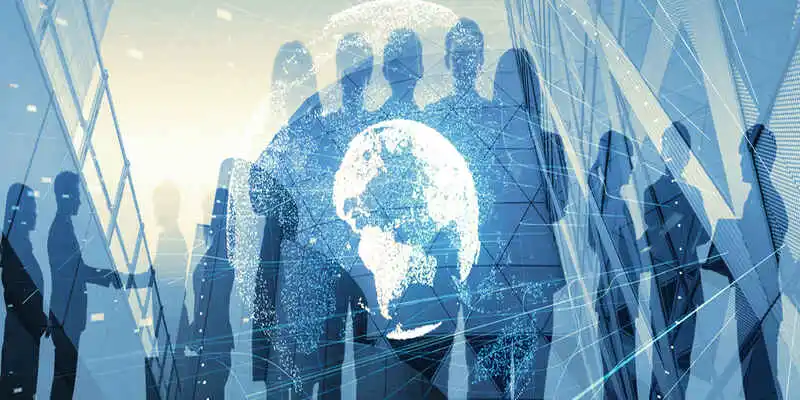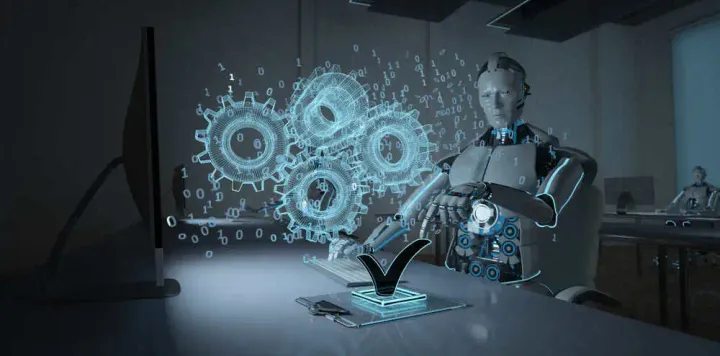Use Of AI To Reduce Street Crimes And Improving Civil Security
In this digital era, several law enforcement agencies across the globe are leveraging artificial intelligence (AI) to resolve more criminal cases in a very short time equipped with AI algorithms developed to identify, locate and arrest the real or potential criminal faster than ever.
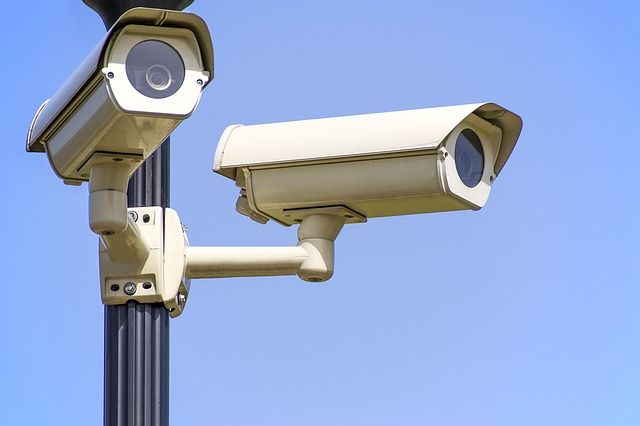
A crime is a thoughtful act resulting in physical or psychological harm and property loss. Street crimes refer to criminal offenses in public areas. The most prevailing street crimes are against property (like pick-pocketing, theft, robbery), personal life (like murder), public health (like drug trafficking), and sexual inviolability (like rape). Isolated and self-destructive individuals are responsible to commit most of the street crimes. Moreover, racial minority citizens are also reported to commit street crimes. Street crime, being the most prevailing malefaction, poses several threats to civil security and need to be reduced.
Since the 1950s when Alan Turing conjured the idea of AI for the first time to date, AI has undeniably come a long way. Today, we can find AI applications everywhere. AI has been used in various sectors like transportation, healthcare, and education, etc, for the last many years. Financial institutions are employing it against money laundering while media enterprises are improving their video footage with the help of AI. Law enforcement agencies are not behind. Every country strives hard to make sure that its citizens are safe and secure and are enjoying a quality life with reduced crime threats. To ensure civil security, the Law Enforcement sector is employing AI and is getting profound benefits from it. In this article, we have mentioned a few AI techniques used by law enforcers to reduce the crime rate, ensuring civil security, and saving innocent people from being arrested.

Law Enforcement Sector and AI
The Law Enforcement sector of any country is responsible for civil security. The primary goal of law enforcers is to ensure that the individuals are enjoying a secured life by resolving and preventing crimes. Today, AI has enabled police officers to handle multiple challenges faced to achieve this task. However, with technological advancements, the crime rate is increasing at an exponential rate as the criminals in the modern age are also advanced and employ digital resources to commit sophisticated crimes. This increased crime rate is alarming, and the conventional techniques to solve crimes are not effective and sufficient as they are slow-paced and fail to deliver results. Therefore, the Law Enforcement Agencies need to realign their tactics and use advanced technology just to keep up.
Several advanced countries have realized the potential of AI in crimes detection and prevention and are now heading towards its use in Law Enforcing agencies. The law enforcement sector is quite expensive as resolving a crime is labor-intensive and time taking. According to a study conducted on policing by Justice Policy Institute, the US annual expenditure on policing is $100 billion. AI is considered an influential tool having a great tendency to deal with virtually all sorts of crimes. The output of using AI in policing is of great worth, though it is still at its progressive stages. It is helping law enforcers to speed up the process of resolving existing crime cases and preventing any crime beforehand.
In short, several law enforcement agencies across the globe are leveraging artificial intelligence to abate and avoid crimes while responding more promptly to crimes in progress. Every crime is connected with some sort of pattern. The concept of agencies behind such projects is that crimes are quite affordable requiring law enforcement to be able to get useful models by sorting through gigantic data. Analyzing huge datasets was not possible a few decades ago. With the advancement in AI and ML, this analysis has become quite easy and affordable.
Thanks to AI! Law enforcers in this digital era can resolve more cases in a very short time equipped with AI algorithms developed to identify, locate and arrest the real or potential criminal faster than ever.
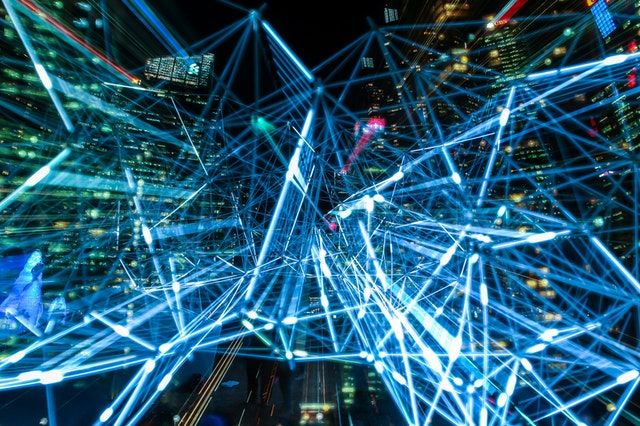
Real-life AI applications used by Law Enforcers
AI has been used as a civil security resource in many ways. Let’s have a look at the most common AI application used to improve civil security by reducing street crimes;
Predictive Analytics
Many agencies are employing AI to forecast street crimes. AI systems scan huge data and use predictive analytics to predict a crime. Based on the data and prediction, agencies then allocate their resources to avoid crimes before time.
AI Facial Recognition
Every human on the planet is characterized by his own distinguishing identity. The human face along with other physical features is also a distinctive attribute. With the advancement in technology, recognition of a person by face is heading towards new dimensions. At present, AI-based facial recognition technology is the most prevalent tool to identify or verify an individual from a digital source like an image or a video. The facial contours of an individual face are the main source to analyze and compare an individual for identification. A street camera footage is of very poor quality. It is quite a difficult and labor-intensive task to review these images by humans. Here comes AI-based facial recognition technology with its advantages of greater accuracy rate in a short time to identify or recognize the faces. AI technology has even enabled the police force to locate an individual/criminal in a crowded area, something that helped the Chinese police force to identify and apprehend a suspect from a crowd of around 60,000 people at a sports event.
Box Camera
It is among the most recent AI innovations and can perform the process of intricate facial recognition. It performs real-time analysis of a face to offer a precise solution. It comprises numerous facial features with a variety of expressions. This device identifies the suspect before he commits a crime.
AI-based Audio Recognition and Real-time Search
The audio recognition system of AI helps the officers to identify the criminal through his voice like when he yells "I will hurt you". AI systems help the officers to promptly find all the needed information regarding a criminal. The audio recognition system of AI is very helpful in this case. AI system runs the suspect's name, date of birth, etc, and then provides his warrant information, recent involvement in cases, and recent arrests along with recent alerts to the officer. Audio transcription is another useful tool of AI. It prints out the recording that can further be used in an officer's report.
Faster Video Analysis
Computer vision is an AI branch used to train the computer to comprehend visuals. The surrounding data captured through a camera is analyzed in this case. It is used for facial and number plate recognition, and to determine location. For law enforcement, one of the most resource-intensive tasks is video analysis where a lot of hours are spent to redact just a five minutes video to find the suspect. AI enables an officer to screen his search and just look for specific characteristics, for instance, a man in the blue trouser. Then the system will start finding the man in the blue trouser. After identifying the man, the officer will remove all the unnecessary information and just the man in blue trousers is left on the screen.
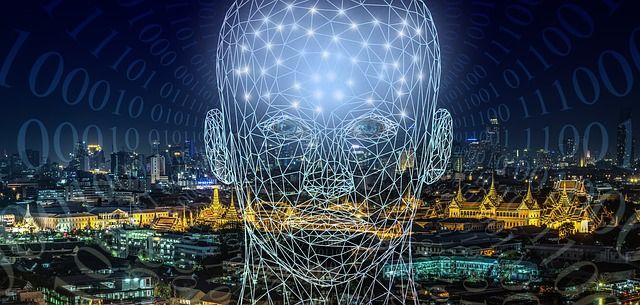
Reducing Street Crimes and Improving Security
At present, numerous law enforcement agencies are employing AI to improve their officers' performance. For law enforcers, AI is emerging as an indispensable tool to support them in different ways. The aim of any law enforcing agency is not just to resolve a committed crime but also to avoid it before time and ensure civil security. This article illuminates the most prevalent AI solutions used by law enforcers to achieve this objective. Let's have a look at the AI-based initiatives taken by law enforcers to reduce the crime rate and improve the security of the public:
- Pre-Crime AI-based Initiatives to prevent street crimes
- Post-Crime AI-based Initiatives to detect street crimes
Pre-Crime AI-based Initiatives
Science facts are approaching the concept of sci-fi movies, as AI is leading towards pre-crime initiatives i.e., "Predictive Policing" where AI helps to arrest the potential criminal or at least identify him for questioning before time. AI lifts the burden of the police force and assists them in preventing crimes through predictive analytics. AI tools help the agencies to point out the doubtful patterns that cannot be identified by humans. Crime prediction techniques are already being used in the US, UK, Germany, and Netherlands. Crime prediction is very crucial as it can save a potential victim’s life and avoid any long-lasting trauma and property damage. AI helps to predict unlawful activities through Artificial Neural Networks (ANNs).
What is Predictive Policing and how it works?
Pre-crime or Predictive policing helps to identify the specific areas where crimes are most probable to occur. Moreover, the time of the crime in that area is also anticipated. Based on this forecast, the police force ensures its presence in that specific area at that specific time to prevent crime from occurring. Hence, crime forecasting enables the well-organized allocation of policing resources.
CrimeScan is software designed for predictive policing. The idea behind this is to observe how analyzing the crime data scientifically could be useful to spot criminal behavior patterns.
PredPol was the program designed around a decade ago by UCLA scientists coordinating with the LA Police department. It employs ML to anticipate the areas where a crime has the most probability to occur during a specified period. The company claims that predictive analysis of its software is two times more accurate than human analysis.
PredPol and CrimeScan both predict the location where the crime is most probable to occur and try to avoid the further step of predicting the criminal.
Police departments in several countries including the UK are employing Facial Recognition Behavioral Software to prevent crimes before it takes place.
Identifying and Tracking Criminals by Facial Recognition
Facial Recognition has been the most common AI tool used extensively in various sectors including police to identify potential criminals. AI-based facial recognition is being applied for surveillance. It enables monitoring real-time data by capturing the event in images or video to analyze and identify the criminal. Several law enforcement agencies are using this AI tool with AI-equipped cameras installed at different places to identify suspects.
A criminal present in a crowded area can also be tracked using AI technology. First of all, the police officer has to feed an image of the criminal into the AI-driven surveillance system. The cameras are then played to scan all over the city. The camera will analyze and compare all the detected faces. If a match is found, the camera issues an alert enabling the police officer to approach and arrest the criminal from the identified spot. Hence, AI-driven facial recognition poses the incredible potential to reduce and prevent crime. However, this AI-based tracking solution needs access to wide-ranged databases comprising varied faces and settings. The data must include images of all assorted skin textures taken at various angles and environments. This huge and diverse data is very helpful in creating précised algorithms.
Staqu, the largest AI-powered video implementation enterprise of India, offers predictive analytics to avoid a crime beforehand. It gathers data from media and analyzes crime patterns, then creates a heat map for law enforcement agencies. Based on the map, LEAs can predict the potential crime, its place of occurrence, and the person who is most probable to commit that crime.

Post-crime AI-based Initiatives
The aim of the police force is not just to avoid crime from occurring but also to solve it once it occurs. The infrastructure of cities is more connected and smarter than ever. This infrastructure furnishes the cities with real-time information through security cameras and street lights that enable police officers to detect crimes once they have occurred.
AI systems used by Law Enforcement to Detect Crime
According to a survey, in 2001, just 50% population of America used the internet as it was not as common as today. Therefore, law enforcement agencies could not get the benefit of advanced technology. However, today LEAs are employing several AI systems to detect and resolve crimes. A few of them are explained below:
Geographic Information System (GIS)
The turning point when technology became a fundamental part of Law enforcement was the introduction of GIS. Today, everyone on this planet owns a smartphone with a built-in GPS. This GPS helps LEAs to track signals and locations where the criminal can be found along with envisaging movements and trends. Hence, the police force can track the criminal and approach him within a short time.
Gunfire Detection System – GDS
GDS is an audible camera with the capability to detect gunfire through AI-powered sensors. These sensors detect the gunshot sound while ML algorithms identify the place from where the sound is propagated. It automatically alerts the concerned officers and also pinpoints the location of the gunshot. It was developed in the 1990s for areas with a high crime rate. This technology was used to apprehend the Ohio snipper attacker in 2003. When used in Washington D.C., this technology identified 337 gunshots in the first year. The number of recorded gunshots dropped to 77 by 2011, representing a decline of 80% in one year. ShotSpotteris a system using AI for gunfire detection. It claims that its GDS is used in around 90 cities of the US.
Automated License Plate Readers (ALPRs)
ALPRs are high-speed camera systems fixed on the street light, street poles, or attached to the vehicles of the police squad. Using ALPRs, the police officers can identify the vehicles present in the surroundings at the time of the robbery or any other street crime. Then the police officer finds out other locations where the vehicle is captured. LEAs claim that ALPR is very helpful in recovering stolen cars and resolving kidnap or murder cases.
These computer-controlled ALPRs automatically record the license plate number of every vehicle passing by along with its area, date, and time. The data including images of the vehicle and its driver is transferred to a central server to be used by police for further investigations. Based on data received, police can determine where the license plate had been in the past. It also helps the police force to find out the presence of a vehicle at the time of the crime, to detect the travel patterns, and to identify the vehicles inter-connected.
Facial Recognition Apps to catch a criminal
Police forces are now using different apps employing facial recognition software to detect and reduce street crimes including robbery, killing and car snatching, etc. Trinetra app launched in 2018 by Staqu Tech, India, is one such app. In the case of chain-snatching, it filters suspects and presents their pictures to the victims to identify criminals with a high accuracy rate.
According to a report by NCRB;
"70% of crimes are committed by repeat criminals. Our facial recognition app works even on low-resolution photos and videos.”
Atu Rai, CEO of Staqu Technologies claims that their facial recognition software has 98% accuracy.
A database developed by Chennai’s Face Tagr is equipped with 75000 photographs. The company claims that the accuracy level of its app to identify faces is 99.4%.
Furthermore, the criminals wearing a mask or scarf to hide their faces while committing a crime can also be identified with the help of AI. Deep-learning is the tool used to identify such criminals. First of all, the face of the criminal is mapped out with his facial points. Then an analysis is performed for the gap between various facial points and angles to have a facial configuration behind the mask. Then it is compared with existing database images. Finally, the actual identity of the criminal is revealed.

Summary
With time, the criminal intellect is also improving through advanced technology, resulting in an increased street crime rate. This context is compelling law enforcers to take preventive measures by adopting the most advanced technology. AI tools are turning out to be very helpful to fight these crimes. It has a great potential in crime prevention and detection. Therefore, several Law-enforcing agencies worldwide are employing the best up-to-date AI solutions to reduce crimes and improve civil security.
To reduce the crime rate, LEAs are employing certain pre-crime and post-crime AI-based solutions. Predictive Policing is the most influential tool to predict a criminal and area where the crime has the most probability to occur. AI-based facial recognition with the help of security cameras is the most common AI tool used by Law enforcement sector for both prediction and detection of criminals. It is the most reliable solution to identify criminals and is getting worldwide attention for a good reason. It expedites well-organized investigations by providing relevant data required by LEAs (Law Enforcement Agencies) so that they could have a prompt and efficient response to prevent a crime before time and solve it once it occurs.
In a nutshell, AI has the potential to enhance the performance of the police force by speeding up the process of crime analysis and assisting them in fighting crimes whether they are in progress or forecasted, hence reducing the crime rate and improving civil security to a great extent.



